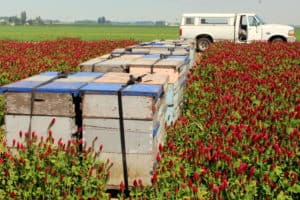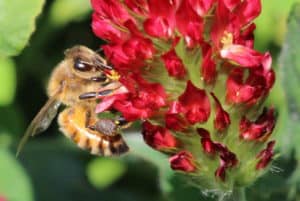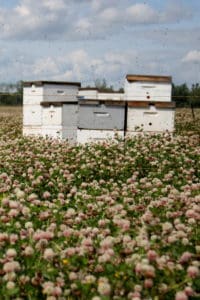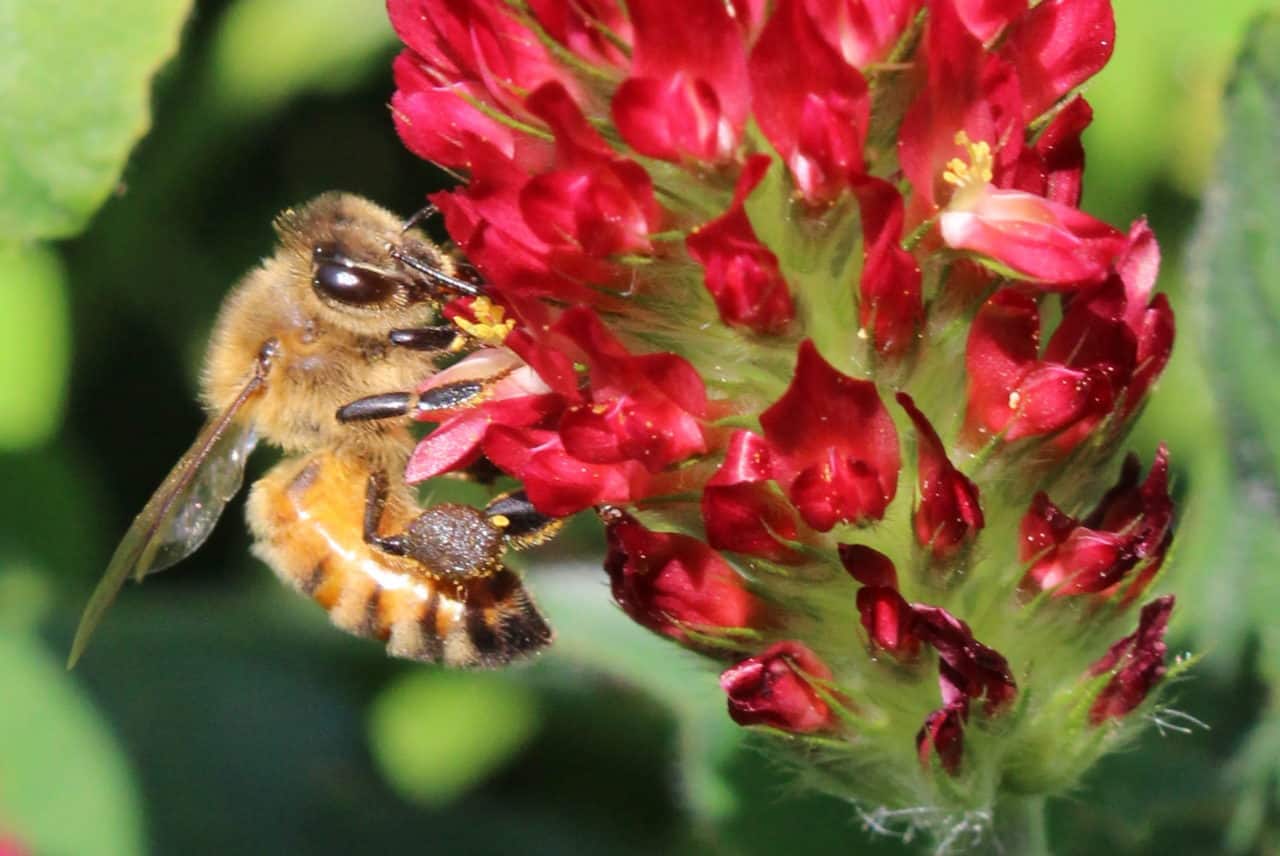
Clover seed is an important crop grown in western Oregon that benefits rom hired honeybee colonies to boost yields. The Willamette Valley has an ideal climate for seed production with high annual rainfalls that allow growing without irrigation but infrequent rains in July and August allow seed to be harvested with limited risk of moisture damage. There are three main types of clover grown for seed in Oregon with all belonging to the Trifolium genus of the Fabaceae family. They are red clover (T. pratense), crimson clover (T. incarnatum) and white or Dutch clover (T. repens). In addition to clovers the Fabaceae family includes other legumes like peas, beans, lentils, soybeans, and alfalfa.

Legumes are nitrogen fixers that produce nutritious forage for livestock as well as being used as green manures. The ability to fix atmospheric Nitrogen (N2) into plant accessible form of Ammonium (NH4) through symbiotic Rhizobia bacteria contained in root nodules allows clovers and other legumes to become rich in plant proteins. Clovers and other legumes are a common inclusion in a crop rotation system through ‘green manuring’ where crops are tilled back into the soil allowing captured Nitrogen to be converted to plant accessible nitrates (NO3) by soil microbes during decomposition. This cycle improves soil fertility for subsequent plantings and helps farmers to maintain higher productivity without increased fertilizer input costs.

It is recommended that a stocking rate of at least two colonies per acre be used to ensure adequate pollination of clover seed crops. White clover and crimson clover, with their relatively short florets are readily worked by honeybees with nectar being relatively easy to attain. Red clover has a longer floral tube, so nectar is not as accessible to honeybees. Bumble bees (Bombus spp.) and other pollinators with longer tongues are better able to access nectar from red clover and are therefore more efficient pollinators but are generally not abundant enough to effectively pollinate large plantings of red clover. Managed honeybees, although not as efficient as bumble bees can do an adequate job of pollinating red clover if there is not too much competing bloom nearby to lure them from red clover plantings. As with all insect pollination, the weather during flowering is hugely influential on the availability of nectar and activity level of insects. Red clover is usually planted in the spring, flowers begins to flower in May and is harvested in late August or September.

White clover is grown as a perennial in the valley where and it is usually grazed in the autumn after harvesting in August and again in the spring to stress the plants and encourage seed production. Pastures are typically left in white clover for 2-4 years to improve the soil quality and then put into grass seed production. Crimson clover is grown for seed on the foothills around the Willamette valley where it is an autumn sown annual that is harvest in late June. Clover honey is white to pale in color and can be readily creamed through controlling the granulation process. It is one of the most common monofloral honeys available and many consumers enjoy it for its mild floral flavor.
